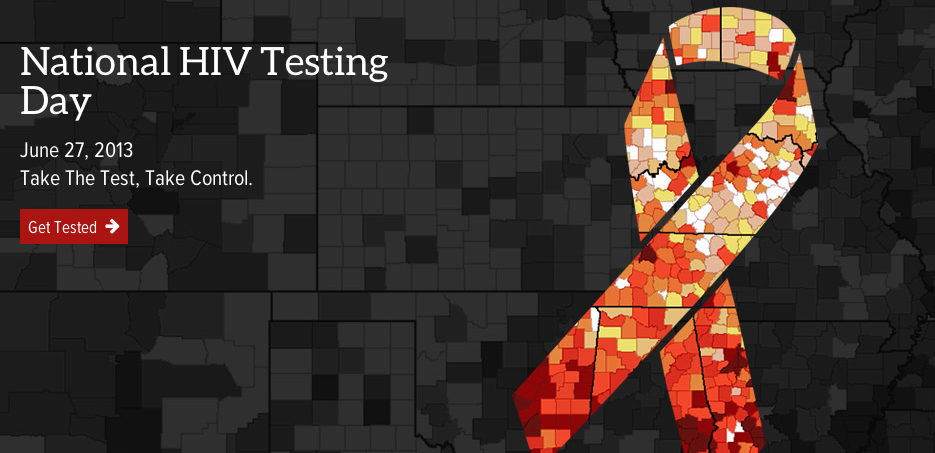LatinaLista — It is said that every 9.5 minutes someone in the United States is infected with HIV. The Centers for Disease Control estimates that more than one million people are living with HIV in the U.S. and 20 percent of them don’t even know it.
While HIV, which turns into AIDS, used to be considered an automatic death sentence, advances in medicine have greatly improved the quality and longevity of life for HIV/AIDS sufferers, but the key is that they must know about their condition.
To promote HIV awareness, June 27 was designated as National HIV Testing Day in 1995. This year marks the 18th anniversary of the annual campaign to get people to get tested for the disease.
Though a lot has been accomplished in medicine, awareness and more people are practicing safe sex, African Americans and Latinos are still disproportionately impacted by HIV/AIDS.
According to Aids.gov:
- By risk group, gay, bisexual, and other MSM (men who have sex with men) of all races remain the population most severely affected by HIV.
- While blacks represent approximately 14% of the U.S. population, they accounted for almost half (46%) of people living with HIV in the U.S. in 2008, as well as an estimated 44% of new infections in 2009. HIV infections among blacks overall have been roughly stable since the early 1990s.
- Hispanics/Latinos represent 16% of the population but accounted for an estimated 17% of people living with HIV in 2008 and 20% of new infections in 2009. HIV infections among Hispanics/Latinos overall have been roughly stable since the early 1990s.
- In 2009, the rate of new HIV infections among Hispanic/Latino men was two and a half times that of white men and the rate among Hispanic/Latino women was four and a half times that of white women.
But statistics only go so far in conveying the impact of HIV on communities. AIDSVu, a project by the Rollins School of Public Health at Emory University, literally maps out the impact of AIDS on national, state and local levels.
AIDSVu is an interactive online map illustrating the prevalence of HIV in the United States. The national, state and local map views on AIDSVu allow users to visually explore the HIV epidemic alongside critical resources such as HIV testing center locations, HIV treatment center locations, and NIH-Funded HIV Prevention & Vaccine Trials Sites. The map also lets users filter HIV prevalence data by race/ethnicity, sex and age, and see how HIV prevalence is related to various social determinants of health, such as educational attainment and poverty.
Each map is colorful and at an instant people can see how their region or city fares with other parts of the country regarding HIV cases and just how much work still needs to be done to combat the disease.



